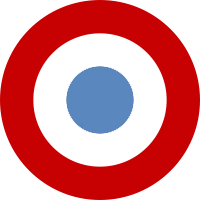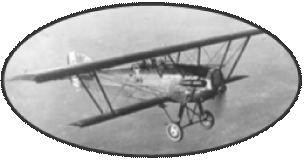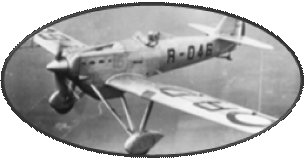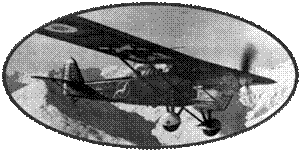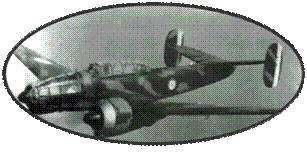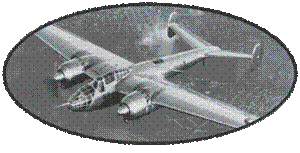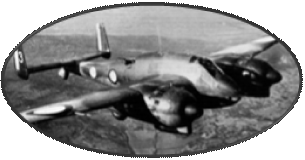The Farman F223 Bn5 was
studied in 1936 as a replacement for the Farman F222. However,
at the request of the Ministry of Air, the heavy bomber was transformed
into a long-haul Transatlantic aircraft, in order to show the
French power against foreign competitors on the North or South
Atlantic lines. The Farman F223 had a remarkable autonomy by replacing
the bombs with additional tanks.
The device, become F223.1,
of still former appearance, presented numerous improvements with
regard compared with F222. Its fuselage, still rectangular, was
much finer and longer than its predecessor. The wings are shorter
and tapered and are connected to the fuselage by mats henceforth
profiled. It has particularly effective curvature flaps: it can
land at 60km / h. It is powered by four Hispano-Suiza 12Xirs /
Xjrs of 720hp in tandem in suspended nacelles. The aircraft made
its first flight on June 12, 1937. He took part in the race Istres-Damas-Paris
on August 20, 1937. Despite his great autonomy which allowed him
not to refuel, he was beaten largely by Savoia-Marchetti SM79
: The Farman finished last of the test ... After some attempts
of record, it is delivered to Air-France on November 13 with name
of baptism: Chief Pilot Laurent GUERRERO. With Paul CODOS as a
driver, he will beat many records and will link Paris to Bueno-Aires
in less than 53 hours, pulverizing the previous record of 16 hours.
It will be equipped, for testing, of a pseudo cabin pressurisée,
but without great success.
At the declaration of
the War, the F223.1 is remilitarized by the addition of modern
radio equipment and a camouflage. On November 9, 1939, it was
destroyed on take-off when it was to be used by Naval Aeronautics
to track German boats privateers .
A second aircraft was
completed at the end of 1937: F223-01. It made its first flight
on January 18, 1938. Similar to the F223.1, it is however powered
by two Hispano-Suiza 14 Aa 08/09 in star of 1100hp. It receives
a defensive armament. During its tests with the CEMA, its star
engines are replaced by Hispano 12Y-29 with liquid cooling. The
device is numbered NC2233-01.
A market was launched for
the delivery of 8 NC2233s and the first series aircraft made its
first flight at the end of 1939, but the NC2233 did not arrive
in the GBI / 15 until May 1940, due to late delivery Of the HS404
cannons.
The NC2233 was virtually
not used in operations and was transferred to North Africa in
June 1940. In July, after the Armistice, certain specimens (Nos.
2-8-9-10) were sold to Air France. The other aircraft in AFN will
be recovered by the FAFL (French Air Forces Free).
Another version, the Farman
2230 was born of an order from Air France for 3 aircraft for testing
at altitude on the North Atlantic. They differ from the F223.1
in particular by the removal of the wing tanks, a more tapered
front, enlarged drifts. It was equipped with a pressurized rest
cabin, an automatic steering. It is powered by 4 Hispano-Suiza
12 Xirs / Xjrs of 720hp. The No. 1 made its first flight on April
28, 1938. The aircraft were renamed NC2234 when they adopted the
new Hispano 12Y 38/39 of 970hp. Thus motorized, he made his first
flight on 15 March 1939. The NC2234-01 is christened "Camille
Flammarion", the NC2234 No. 2 "Le Verrier" and the NC2234-02 "The
Jules Verne"
At the declaration of the
war, the NC2234-01 is assigned to Aeronautics, but will not participate
in the fight and will finish his career on the ground of Beyrouth
in 1941 after a bad landing.
The NC2234 n ° 02 is also
dedicated to Naval Aeronautics. The aircraft became "Jules Verne"
and was transformed into a bomber from 28 April to 6 May 1940.
He took part in bombing missions on Maastricht and the Aachen
railway station. For these nocturnal missions, the "jules Verne"
is painted in matt black and it will become famous by the bombing
of Berlin on 7 June 1940
In August 1940, after
the Armistice, the three Farmans were transferred to Marignane
to be ceded to air France. Blocked by the commission of Armistice,
the "Jules Verne" will be abandoned on the ground and burned in
November 1942. The "Verrier" will be shot down by an unknown fighter
over the Mediterranean on 27 November 1940: it crashes at sea
with all his crew.
